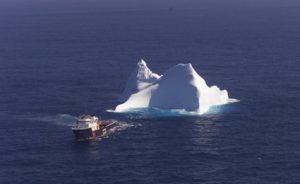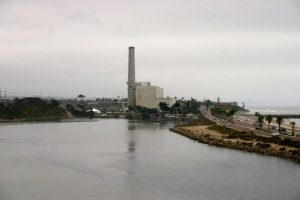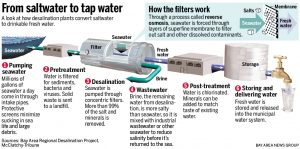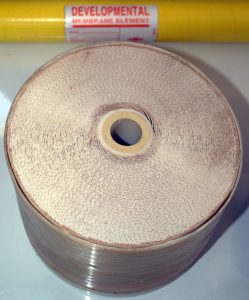Desalination: a viable option?

Drought. Scarcity. Pollution. Climate change. Demand. Overpopulation. These are all issues with our nation’s water supply with which we have become all too familiar. Engineers and water systems are scrambling for solutions, and countless possibilities — some as basic as conservation and water bans and some as complicated as water reclamation and transporting icebergs — have been considered. Communities struggle to meet demand with dwindling supply and a limited budget, and many have begun to give desalination serious consideration.
Desalination, or the process of removing salt from water, used to be summarily dismissed as a supply option due to its expense and energy consumption. However, in light of the increase in water scarcity, desalination has become a feasible option for many water-stressed communities. Already commonplace throughout the Middle East, desalination plants are now popping up all over southern California and Texas. Let’s look at some facts about global desalination:
-

When complete, the Carlsbad, CA desalination plant will be the largest in the western hemisphere Dubai sources over 98% of its potable water supply from desalination
- Global leaders in desalination are Saudi Arabia with 17% of global output, United Arab Emirates with 13.4%, and the United States with 13%
- Nearly 70% of Israel’s domestic water consumption comes from desalination
- Most desalination plants are in the Middle East, where energy is less expensive and environmental regulations are less stringent
- Currently under construction, the $1 billion, 50 mgd Carlsbad desalination plant in Carlsbad, CA will be the largest in the western hemisphere when completed
- Costing $2 billion, the Sydney, Australia desalination plant has not produced any water since 2012 due to high dam levels
 The most commonly utilized desalination technology is reverse osmosis (RO), which was invented in California in the 1950s. RO uses high pressure to force water through fine membranes that leave the salt behind. For every two gallons of salty water, only one gallon is made available as freshwater. The whole process utilizes an exorbitant amount of energy, with energy accounting for up to half the total cost of desalination. In fact, desalinated water costs about $2,000 per acre-foot, which is approximately the amount of water used by a family of four in six months. Because less salty water requires less energy for processing, the most cost-effective desalination plants treat brackish, or slightly salty, water rather than seawater.
The most commonly utilized desalination technology is reverse osmosis (RO), which was invented in California in the 1950s. RO uses high pressure to force water through fine membranes that leave the salt behind. For every two gallons of salty water, only one gallon is made available as freshwater. The whole process utilizes an exorbitant amount of energy, with energy accounting for up to half the total cost of desalination. In fact, desalinated water costs about $2,000 per acre-foot, which is approximately the amount of water used by a family of four in six months. Because less salty water requires less energy for processing, the most cost-effective desalination plants treat brackish, or slightly salty, water rather than seawater.

There are some environmental concerns surrounding desalination as well. The highly concentrated salt brine left behind requires disposal. However, because it is twice as dense as seawater, it sinks to the ocean floor and spreads, suffocating bottom-dwelling marine life. Therefore, the brine byproduct must be mixed with freshwater, typically in the form of treated wastewater or cooling water from a power plant, prior to being released into the ocean. In addition, fish and other marine life are often sucked toward the intake pipes where they are killed on the intake screens (impingement), and smaller marine life, such as plankton, larvae, and fish eggs, pass through the screens and are killed during the desalination process itself (entrainment). Fortunately, there have been some recent innovations to address these concerns. For example, subsurface intakes pull seawater from beneath the seafloor, virtually eliminating impingement and entrainment. An added bonus to subsurface intakes is the fact that the sand acts as a natural filter that pre-filters the water, reducing the plant’s chemical and energy usage.

This summer, HydroRevolution, a subsidiary of San Francisco-based agricultural and commercial water producer WaterFX, announced its plans to build California’s first commercial solar desalination plant in the state’s heavily agricultural Central Valley. The plant will run solely off solar thermal energy and will utilize Aqua4, a new desalination technology that produces only solid salt and freshwater, with zero excess discharge. In addition, it will utilize unusable irrigation water from a 7,000-acre ditch rather than seawater. The plant will provide the necessary freshwater for the area’s irrigation needs without the energy consumption or concentrated briny discharge of traditional desalination plants. Admittedly, having the 7,000-acre ditch from which to draw the water helps immeasurably, and isn’t an option for most other areas.
But desalination isn’t only being used in the southwestern part of the country. In Massachusetts, the Town of Swansea recently opened the first publicly held desalination facility in the Northeast. A coastal town, Swansea experienced a population boom that led to groundwater supplies running low, which in turn allowed seawater to seep into the aquifers. The result was a water crisis that forced the enactment of water bans, steep fines – and even left 30% of the town without water for a brief period one summer.
According to Robert Marquis, who has acted as Swansea’s water manager for over 40 years, “We just couldn’t support a burgeoning population or commercial growth,” he said. “Anything that came into Swansea, we were objecting to it if it was going to be water intensive.”
Designed with the help of Tata & Howard’s own John Cordaro, P.E., the Swansea desalination facility has been online for over a year, and took home a third place global finish at the 2014 Global Water Awards, losing only to Dubai, Singapore, and Sorek, Israel.

There is one matter with RO that, while a non-issue in sunny southern Californian, is a primary concern to the Northeast: RO filters are delicate and highly intolerant of ice, and cease being functional below 36°F. To address this issue, Swansea installed two miles of pipes in order to sufficiently heat the incoming river water prior to its entering the plant.
For water-stressed Swansea, desalination has been a successful solution. But nearby Brockton, Massachusetts has not realized the same benefit from their desalination facility. Costing roughly $120 million, the plant was constructed to utilize brackish river water as opposed to seawater, which Brockton officials believed would make the whole process affordable. However, seven years later, the water produced by the Brockton desalination plant is still too expensive, so the city has turned to a local lake as its source, leaving the costly desalination plant largely in disuse.
While desalination is heavily utilized throughout the Middle East, it has only recently come under serious consideration in the United States. As water scarcity increases due to population growth, climate change, and growing demand, alternative water source options are receiving close attention. Once not even considered due to energy costs and environmental concerns, desalination has become a frequent and sincere topic of conversation for meeting future needs. And with further advances in technology that address both energy usage and environmental impact, there remains a strong possibility that desalination could become a widely acceptable solution nationwide. Now if folks could just get on board with water reclamation…
